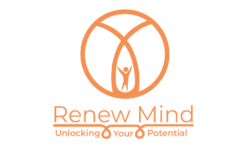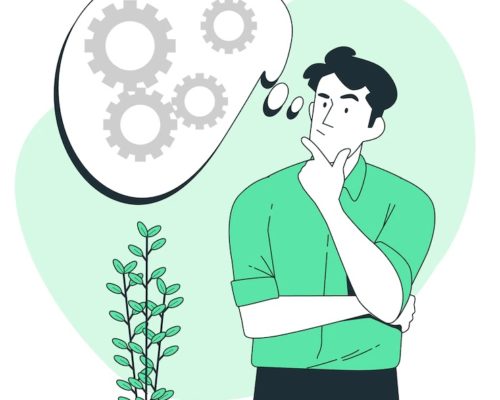We all have biases, whether we are aware of them or not. We hold opinions in favor of, or against, a person, thing or a group compared with others. These preconceived opinions are often not based on reasoning or actual experience.
Our perceptions of reality are shaped by the way human brain has adapted to process information. Since our brain is continuously flooded with information, and we make numerous decisions each day, our brain has evolved to create “shortcuts” – common thinking errors all humans unconsciously make daily known as cognitive biases. These shortcuts help perceive surroundings quickly and efficiently and unconsciously get in the way of problem solving affecting our judgment because we’re not seeing the situation as it is.
To simply put, Cognitive biases are overly rigid patterns in our thinking that can undercut our effectiveness in decision making.
Learning about cognitive biases helps formulate strategies that one can use to build thinking that enables resilience.
Some of the common cognitive biases are:
- PERSONALIZATION- believing that everything that happens around you is because of you or your actions. E.g. “I’m the sole reason for the team to not get the project. I didn’t do my best. I’m not good enough to be here.” Or “I am the sole reason why my children are not doing well in class, I’m always busy with work and not able to focus on them.” This creates a pattern of experiencing guilt and sadness.
- MIND READING- mind reading is assuming you know what another person is thinking and or expecting that other person to know exactly what you are thinking. Often when we are assuming what the other person is thinking, we assume they are thinking something negative of you. Rarely we assume that someone else is thinking great things about us. E.g. “My husband thinks that I am always wrong and that’s why he always shuts off after an argument. He always wants me to apologize first that’s why he is avoiding talks”. The effects of mind reading is that it blocks communications because we think that we know 100% what other person is thinking. Mind reading has negative effects on relationships.
- THEM TRAP- when you are in this thinking trap, you believe that other people or circumstance, is the sole cause of your problems. E.g. “This person takes so much time to complete any work and because of him our project is always delayed. With people like him our team always suffers and I’m so upset with him.” People who experience these thought patterns often feel frustrated and angry.
- CATASTROPHIZING- Assuming that the worst will happen, with little actual evidence. You go round and round on the worst case outcomes of a situation and all this blocks you from taking any action E.g. “The project I am leading will be a failure. One of the team members is friends with the boss, he will keep passing small errors/information to the boss and they both will start gossiping about everything that I will do, and I will never be asked to lead a project again.” These though patterns lead to agitation and lot of anxiety and inhibit your ability to engage in any productive way.
Cognitive biases only account for parts of the truth, event, or scenario without accounting for all possible options. If left unchecked, these biases can accumulate to form negative mindsets about self and others, which can negatively impact our daily emotions, behaviors, and interactions with others.
So, what can we do to overcome these biases-
- SELF-AWARENESS – Acknowledging your biases is the first step. It’s beneficial to know which trap you fall into, under what circumstances.
- EVIDENCE– finding evidence against the thinking pattern is very helpful. You can use data to prove to yourself why that thought is not true. E.g. If you are about to do a presentation and your thinking gets into your way and you start thinking that “I will be a joke in front of people. Will I be able to present, or will I fail?” You can counter this thought by providing evidence to yourself “I have really spent time and worked hard on this and also done so many presentations in the past and, I am sure going to handle this one too.”
- PLAN– This strategy is particularly effective when you are catastrophizing. When your brain is starting to convince you of all of these horrible things that are about to unfold. This generates lots of anxiety and hinders in performing effectively. E.g. You have to represent your company in front of some important delegates for a big project and you are continuously thinking – “what if I am unable to answer their queries, what if they ask me something that I don’t have an answer for.” In this situation, you can say to yourself that “if I am unable to answer any queries, I will ask for time to revert.” So you are creating an in the moment contingency plan which will help you relax and go into the situation feeling more prepared.
- REFRAME– This requires using optimism in the moment to get the outcomes you want. E.g. You have to travel for work, and you feel that your partner will have to manage home and kids and you are feeling guilty about it (Me trap). When this counterproductive thought hits you, you can reframe the thought by saying “a better way of seeing this is, we both love our careers and when one of us is away, the other is at home, taking care of home and kids. So we assist each other by dividing responsibilities and also encouraging each other to pursue our careers..” So we are using a more optimistic way of viewing the situation and are able to come out of thinking pattern.
We all fall under these biases in our day-to-day life. The important point is that we learn to recognize these biases and take deliberate action to overcome them. So that we are able to handle situations more effectively and enhance our resilience.
* Cognitive bias Recognizing and managing our unconscious biases- Richard L. Byyny, MD, FACP, The Resilience Factor -Karen Reivich and Andrew Shatte


